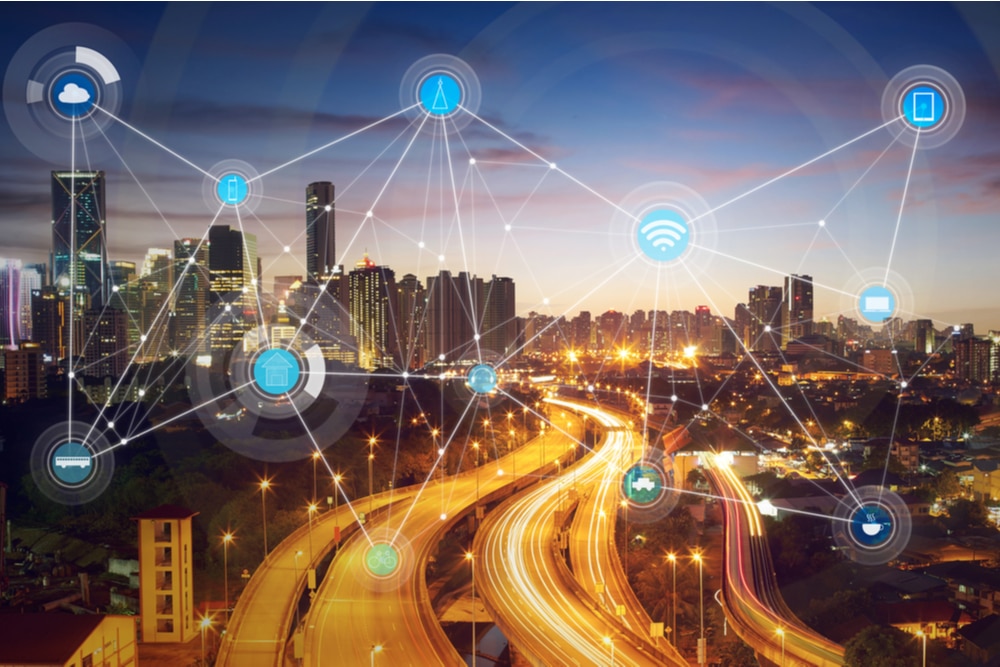Most of us are familiar with the Internet Of Things (IoT) largely thanks to the smart devices in so many of our homes. However, in business and industry, IoT has an even greater role to play.
Connected devices have the power to do everything from automating manufacturing processes to collating and segmenting huge amounts of data on demand – and that’s just the tip of the iceberg.
But how can businesses make best use of IoT? Is there a way they can future-proof their needs by making the necessary IT investment now?
Let’s consider where this technology’s heading.
Understanding IoT
In its most basic form, IoT is the exchange of data between machines – without human intervention. The arrival of wireless internet and broadband has made this a great deal easier. Information can be exchanged remotely – as long as the infrastructure is in place.
For example, a logistics company using GPS-enabled IoT devices, can track every single shipment thanks to a smart device on each container. In a similar way, a connected device attached to an offshore wind turbine, can send crucial information about both weather conditions and the amount of power it’s generating – without the need for a staff site visit.
Additionally the huge amount of data generated by IoT devices need to be analysed and processed before it can be used for predictive maintenance or understanding customer interaction.
IoT applications are endless. And as more and more companies from across many different sectors explore how their businesses can benefit, there’s a growing need for a robust infrastructure and processes that can deliver the necessary interpretation, speed, scale, and connectivity.
Network Effects
In urban areas, IoT connectivity is rarely an issue. The ubiquity of 3G and 4G – and the imminent arrival of 5G – means that being ‘always on’ is pretty much assured. And the more advanced these networks become, the more secure the transferal of data. 5G even adds low latency, high bandwidth, and improved quality of service to the equation – which allows IoT networks to become control points in critical business processes.
However, in more remote areas this can be an issue. For buildings such as power stations and large factories; as well as locations such as airfields – and let’s not forget tankers and ships at sea – continuous network coverage isn’t assured.
Similarly, in areas where 2G is relied upon, the prospect of having this shutdown in the near future could well put businesses on the back foot instead of being ready to embrace new technologies.
Part of the issue is the mobile carriers themselves. The contracts and solutions they’re currently able to offer – even on an enterprise basis – don’t yet match customers’ long term needs. And ensuring that they do isn’t financially attractive.
The life span of most IoT hardware devices is often 20-25 years. However, a business needs to overhaul its service every five years in line with what carriers can offer – meaning more capital outlay, more technical expertise, and often more field service visits.
Or does it?
Futureproofing IoT
A company might have a global contract for their IoT devices – with Vodafone, BT, Deutsche Telekom, Telefonica, or similar – allowing them to operate across borders in specific geographical regions. But after several years, the infrastructure they have in place may become unsustainable, overly expensive, or obsolete.
Often an entire network migration is needed. To minimise the overall expense, it could be that a business opts for a staggered rollout approach. However, the impact of doing this means that IT and telecoms departments end up with a fragmented solution – a mishmash of contracts and providers.
A better solution is to work with a managed IT and telecoms partner, who can offer independent advice and recommend optimal future-proofing industry IoT solutions. In addition to working closely with IT and procurement departments on IoT strategies, an outsourced partner can manage the entire implementation.
Intelligent Independent Solutions
For example, they may recommend installing white label SIM cards on IoT devices – which can connect with wireless internet from multiple carriers to ensure continuous connectivity. In addition, these kinds of SIMs can be easily programmed – remotely – allowing businesses to easily update the software or IoT networks devices need to run effectively and securely.
A white label SIM card solution gives the company operating each device – or their IT services partner – a complete overview of their network; enabling them to respond to issues on a case-by-case basis instead of deploying costly ongoing maintenance efforts. Solutions like these can also complement other IT-focused initiatives; such as business intelligence, process optimization and machine learning – to help businesses work more efficiently using the wealth of IoT device data at their disposal.
When it comes to IoT, knowing which options are available to your businesses, now and in the future, is critical to successful implementation. Working with a trusted, independent advisor with the right expertise – and a broader take on the IT sector as a whole – can save you a lot of time, money, and stress overall.
Getting to grips with IoT? Have hardware in place but need an individually-tailored network solution? Book now your free consultation or subscribe hassle-free for regular updates.

